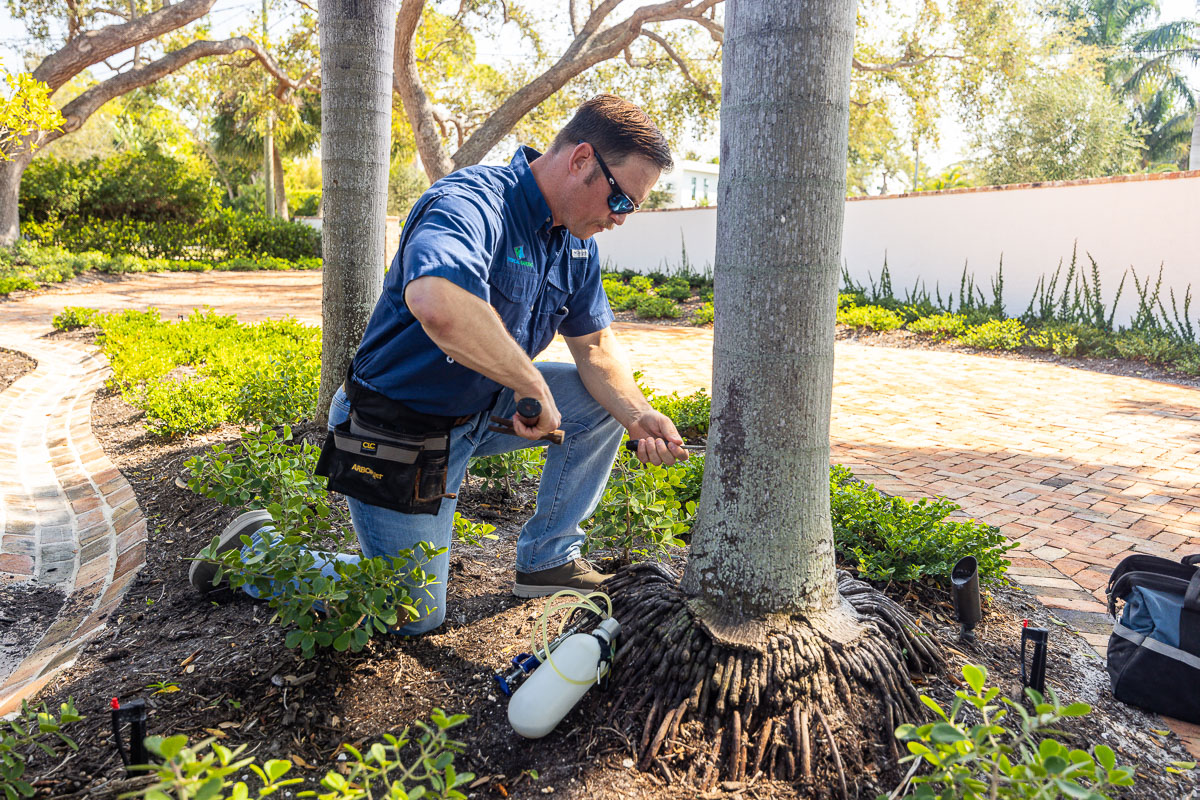


Our beautiful state of Florida is known for its sunshine, the ocean, and, of course, palm trees. Palms are an iconic staple here and one of the most common trees in our landscapes. However, just like your lawn, palm trees require proper care to stay healthy and stunning year-round. One key aspect of palm tree care is fertilization.
You may be wondering: "When should I fertilize my palm trees in Florida?" or "What’s the best type of fertilizer for palms?" Maybe you're unsure about how to fertilize palm trees correctly. Don’t worry! In this blog, we’ll break down everything you need to know about palm tree fertilization. By the end, you’ll have all the information you need to make informed decisions—or hire a professional to ensure your palms thrive.
Regular fertilization is crucial for healthy palm trees. In Florida, palms benefit from quarterly fertilization—February, May, August, and November. These intervals provide a consistent supply of nutrients to help them withstand seasonal changes and environmental stressors.

If you’re curious about what types of palm trees you may have on your property, here are some of the most common varieties in the Sarasota area:

Palm tree fertilizers provide essential nutrients that mimic the natural balance of elements these trees require to thrive in Florida’s sandy soils. The most important nutrients include:
For even better results, many specialized palm tree fertilizers also include trace elements like manganese and boron, which prevent common deficiencies seen in Florida palms.
There are two main types of fertilizers to choose from: fast-release (liquid) and slow-release (granular). While both provide nutrients, slow-release fertilizers are generally better suited for palm trees because they deliver a steady supply of nutrients over time. This gradual release mimics how nutrients are absorbed in nature, preventing nutrient burn and ensuring long-term health.

Here’s a quick comparison:
Correct application is just as important as choosing the right fertilizer. To ensure your palms absorb the nutrients effectively:
Sometimes, it’s clear your palm trees need a little extra care. Here are some common signs that they might be lacking nutrients:
If you notice any of these symptoms, fertilization might help—but it’s also wise to consult a professional to ensure there aren’t underlying issues like pests or diseases.
Palm trees are an iconic part of Florida’s landscape, and they deserve the best care to stay healthy and beautiful. With regular fertilization and proper nutrients, your palms can thrive year-round.
At Tropical Gardens Landscape, we’ve developed a custom, slow-release fertilizer blend designed specifically for palm trees in Florida. When you sign up for our palm tree fertilization service, you’re not just getting fertilizer—you’re getting peace of mind. Our expert team will visit your property quarterly, monitor your palms for any issues, and provide tailored care to ensure they remain stunning and stress-free.
Call us at (941) 231-7027 or fill out our get started form to schedule your service today! We proudly serve Sarasota, FL, and surrounding areas, including Siesta Key and Longboat Key.